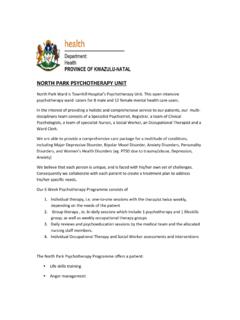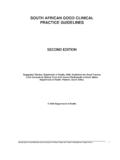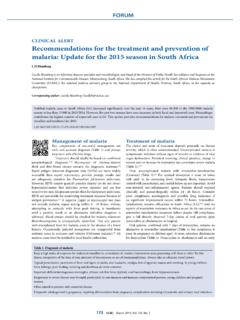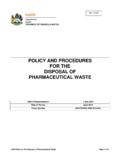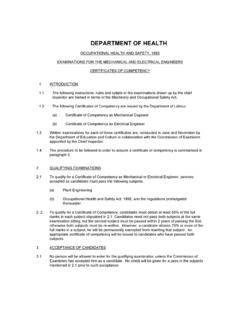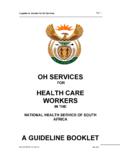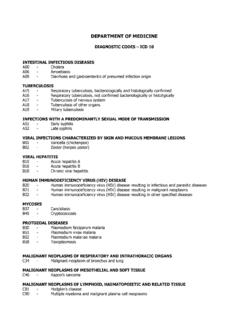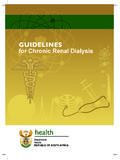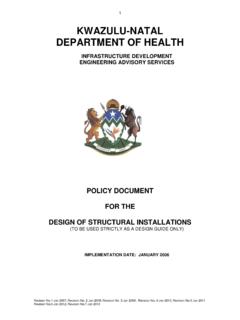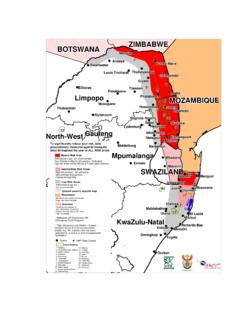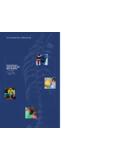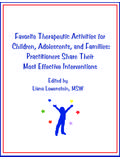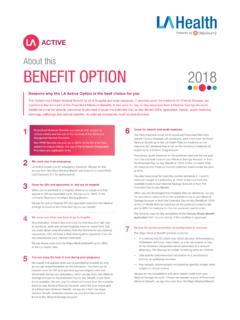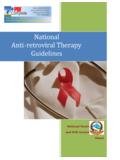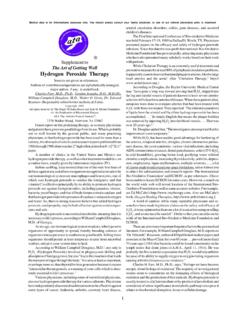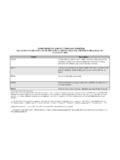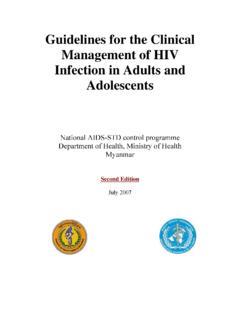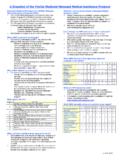Transcription of MANAGEMENT OF CHILDREN ON ART - Department of Health
1 STEP-BY-STEP GUIDE FOR THE MANAGEMENT OF CHILDREN ON ART 4th Edition Compiled by: NH McKerrow, CR Stephen, SE Purchase, R Reddy Department of Paediatrics Pietermaritzburg Metropolitan Hospitals Complex, KwaZulu-Natal KL Naidoo Department of Paediatrics King Edward VIII Hospital Durban, KwaZulu-Natal M Archary Paediatric Infectious Diseases Unit University of KwaZulu-Natal, Durban J Houghton CHIVA, South Africa August 2010 Pietermaritzburg ISBN No: 978-0-620-47492-4 Foreword HIV/AIDS continues to play a significant role in the morbidity and mortality of CHILDREN in southern Africa. In South Africa it is an underlying factor in of hospital deaths amongst CHILDREN below 5 years of age. In light of this the revised National PMTCT and ART protocols introduced on 1 April 2010 are welcomed. The challenge facing this province is to convert sound policy into effective practice and to ensure easy access for all our CHILDREN to appropriate preventive and treatment programmes.
2 A number of tools are available within our Health service to assist clinicians at all levels of care with this process of implementation. These include an IMCI HIV/AIDS algorithm for use at the primary Health care level and this Step-by-Step guide for use at all levels of care. The fourth edition of this handbook is an accessible guide to assist Health care workers in providing antiretroviral therapy to HIV infected CHILDREN . It includes the latest policies, protocols and practices in an easy to use and practical format that will aid both experienced and inexperienced clinicians. All clinicians working with CHILDREN in this province are encouraged to use this handbook so that we are able to ensure that our CHILDREN receive appropriate care of an acceptable standard. 1 TABLE OF CONTENTS Paediatric ART Programme .. 3 Treatment Timeline .. 4 Identify Patients .. 5 HIV Counselling and Testing (HCT) .. 6 Confirm Diagnosis .. 7 HIV Blood Sample Requirements .. 9 Routine Care of HIV-Infected CHILDREN .
3 10 Disclosure to CHILDREN .. 11 Caring for Care-givers .. 12 Assess Eligibility for ART .. 13 WHO Clinical Staging .. 14 Screening Visit .. 16 Excluding Tuberculosis .. 17 Antiretroviral Choices for CHILDREN .. 18 Treatment Visit 1 .. 19 Treatment Visit 2 .. 20 Laboratory Investigations .. 21 Follow up Visit 1 .. 22 Subsequent Visits .. 23 Adolescent-Friendly HIV Services .. 24 Move from First to Second Line Therapy .. 25 Adherence Assessment .. 26 Adverse Drug Reactions .. 27 When, How and Where to Refer .. 30 Appendix I IMCI HIV Assessment Chart .. 33 Appendix II PMTCT National Guidelines .. 35 Appendix III HIV PEP following Sexual Assault .. 37 Appendix IV WHO Nutrition HIV 38 Appendix V Developmental Assessment .. 40 Appendix VI Body Surface Area .. 42 Appendix VII Drug Profiles .. 43 Appendix VIII Simplified Dosing in Resource Poor Settings .. 53 2 3 PAEDIATRIC ART PROGRAMME NOT ELIGIBLE ELIGIBLE PREPARATION Screening visit REVIEW Clinical Immunological ASSESS ELIGIBILITY FOR ART Eligible Fast Track Age Infants < 1 year of age Clinical Stage WHO Stage 4 CD4 level MDR or XDR-TB Social criteria CONFIRM DIAGNOSIS RCT Consent Pre- and post-test counselling Disclosure to CHILDREN HIV testing HIV Testing Guidelines Laboratory procedure HIV Rapid / DNA PCR IDENTIFY PATIENTS PMTCT Infants and CHILDREN Asymptomatic (PIT & Exposure) Symptomatic - Outpatient (IMCI chart) - Inpatients (HIV Comprehensive Care Plan)
4 PEP for Sexual Assault Survivors ROUTINE CARE Participation Nutrition Hygiene Supportive care Symptomatic treatment Prophylactic treatment Review for ART TREATMENT Visit 1 Initiation of ART Visit 2 Concomitant TB ARV Choices for CHILDREN Move from 1st to 2nd line therapy Laboratory Investigations FOLLOW UP Follow up visit 1 Subsequent visits Adverse events / Reactions Grading severity Lactic acidosis IRIS 4 TREATMENT TIMELINE The concept of a timeline for the process of initiation of ART for CHILDREN is NOT to hinder access to therapy, but to enhance adherence to therapy. The timeline creates an additional means to monitor the care-giver s ability to adhere to a Health programme. If s/he is unable to achieve the timeline, delay the initiation of ART until additional adherence training has occurred. The timeline is a guide only and follow-up may need to be individualised for particular CHILDREN . Fast-Tracking The following CHILDREN must be fast-tracked for initiation of ART within 2 weeks: ALL CHILDREN less than 1 year of age WHO Stage 4 MDR or XDR tuberculosis Time Activity Identify patients (see pg 5) Confirm diagnosis (see pg 7-8) Assess eligibility for ART programme and assess for fast tracking (see pg 13) - 2 weeks Screening (see pg 16) 0 weeks Treatment 1 (see pg 18) 2 weeks Treatment 2 (see pg 19) 4 weeks Follow up 1 (see pg 21) 8 weeks Subsequent visits (see pg 22) Monthly 4 To assess: Disease progression Growth monitoring Revision of drug dosages Adverse drug reactions 4 3 monthly 5 IDENTIFY PATIENTS It is essential that every child is assessed for signs of HIV infection at every encounter with the Health system and that their care-givers are offered Provider Initiated Testing (PIT) PMTCT PROGRAMME (see Appendix II) Asymptomatic infants.
5 HIV infection confirmed on routine HIV testing as part of the PMTCT programme HIV DNA PCR at 4 - 6 weeks of age, or 4 - 6 weeks after cessation of breast feeding Symptomatic infants: HIV disease is suspected on the basis of their clinical status INFANTS & CHILDREN Asymptomatic: PIT (Provider Initiated Testing) Screening CHILDREN of HIV-infected adults through adult services: CDC / Family Clinics Symptomatic: Identification of CHILDREN with one or more signs suggestive of HIV during routine clinic, OPD or hospital visits (see IMCI Chart in Appendix I for outpatients, and ensure an HIV Comprehensive Care Plan for inpatients) SEXUAL ASSAULT POST EXPOSURE PROPHYLAXIS (PEP) (see Appendix III) HIV-infected status is identified during the PEP programme for survivors of sexual assault. 6 HIV COUNSELLING AND TESTING (HCT) Assent should be sought from all CHILDREN and if mature enough, the child should be included in the counselling process CONSENT Testing may only be done following pre-test counselling and informed consent with the following persons.
6 The child, if of the age of 12 years and of sufficient maturity to understand the test the parent, legal guardian or care-giver of the child managers of CHILDREN s homes, if child legally placed in the institution the medical superintendent of a hospital, in life-threatening situations PRE-TEST COUNSELLING Choose a private area for counselling and assure the person of confidentiality Talk through the reasons for HIV testing look at benefits and the disadvantages Find out how much the person knows and offer information about HIV and AIDS Offer information about the HIV antibody test, including information about the window period Go through the implications of a positive test result, particularly if a parent has not been tested, as a positive result in the child suggests a positive result in the mother Discuss the person s possible responses to a positive test result. (Whom can he/she tell and where can s/he get support?) Be aware of the person s concerns and let these guide the discussion Go through the implications of a negative test result Provide information about how the test is done, and how to obtain results Give enough time for the person to consider whether s/he wants to have the test If the person decides to have the test, obtain consent in writing on the clinic card POST-TEST COUNSELLING Counselling after an HIV test is essential, irrespective of the result.
7 Test Results: (Remember that if an HIV ELISA/Rapid was done on an infant this will reflect the mother s status but not necessarily that of the child) If the result is negative: Deal with the feelings arising from a negative result and explain about the window period Discuss ways to prevent HIV infection, and the importance of remaining negative If the result is positive: Tell the person as clearly and gently as possible, then deal with their immediate feelings Give the person time to understand and discuss the result, and to express emotion Provide information in a way that the person can understand Discuss how the person plans to spend the next few hours and days Identify what support s/he has and discuss disclosure issues with child and others Share information with the person about what to expect and how to care for the child Go through the ways the person can take care of her/his own Health Encourage the person to ask questions Refer the person, where possible, to a community support organisation for follow-up Encourage the person to return for another follow up session If possible, write down some information to help the person remember what was said 7 CONFIRM DIAGNOSIS HIV TESTING GUIDELINES Age HIV testing Positive Results Negative Results <18 months Do both tests HIV antibody test.
8 Rapid test Not confirmatory if < 18 months Shows either mother s antibody or child s HIV antibody In first few months of life confirms child has been exposed to HIV, due to passive transfer of maternal antibodies Positive test results from 9-12 months of age usually suggests child is infected Indicates mother is infected and needs referral for ART eligibility If not breastfed = not infected If still breastfed = repeat test once breastfeeding is discontinued for 6 weeks or more Negative test result rules out infection acquired during pregnancy and delivery but child can still be infected through breastfeeding HIV virology tests: HIV DNA PCR (Dried Blood Spot) HIV RNA PCR (Viral Load) Best performed 4 - 6 weeks of age Confirmatory test for < 18 months Positive virology test at any age = child is infected, Positive HIV DNA PCR OR HIV RNA Viral load > 10 000 copies/ml Negative virology test and never breastfed, or not breast fed in the last 6 weeks = child is not infected Negative results if still breast feeding need to be confirmed 4 - 6 weeks or more after breast feeding discontinued 18 months HIV antibody test: Rapid test (x2) HIV ELISA Valid results as for adults Both Rapid tests positive = HIV infected child Do a confirmatory HIV ELISA if the two Rapid tests are discordant Negative = the child is not infected If negative and still breastfed, repeat test once breastfeeding discontinued for 6 weeks or more Note.
9 If at any point patient s clinical stage does not correlate with laboratory diagnosis please repeat test 8 HIV TESTING ALGORITHMS (SA National DOH Guidelines 2010) 2 Mother requires second rapid test to confirm her HIV positive status as soon as possible. At the same time she should receive clinical staging, CD4 count, TB screening, contraception advice and be advised that her partner and other CHILDREN require HIV tests. Referral to Comprehensive Care MANAGEMENT and Treatment (CCMT) site: for ART if eligible or wellness clinic if not. 1 Age 18 months Age < 18 months HIV rapid test (or HIV ELISA) Negative Second HIV rapid test Child HIV- uninfected Repeat testing if child breastfed (4-6 weeks after cessation) or clinical features suggestive of HIV infection Positive Positive Negative HIV ELISA Child HIV- infected Start cotrimoxazole if indicated (as per guidelines) Refer CCMT for MANAGEMENT Mother HIV positive Mother HIV negative? Mother HIV status unknown status HIV PCR at 6 weeks 1 Start cotrimoxazole Rapid test on mother (or infant).
10 If positive, refer mother to CCMT for care 2 HIV PCR positive 3 HIV PCR negative Child HIV- infected Prompt referral for CCMT for confirmatory viral detection test and MANAGEMENT Child HIV- uninfected 4 if stopped breast feeding > 6 weeks ago. Stop cotrimoxazole. If breast-fed or clinically symptomatic, repeat testing required. Plan 18 month HIV ELISA/Rapid test HIV PCR positive HIV PCR HIV PCR negative Rapid test HIV-exposed < 6 weeks and clinically symptomatic HIV-exposed from > 9 months but < 18 months of age Rapid negative Rapid positive Perform HIV PCR as above Refer to 3 above Repeat PCR at 6 weeks Refer to 4 above 9 HIV BLOOD SAMPLE REQUIREMENTS Test Sample Transport Time Frame To lab Until results Rapid HIV Kit Nil - 20 mins HIV DNA PCR (Dried blood spot) Label card carefully Clean puncture area and allow to dry DO NOT squeeze/ milk puncture site DO NOT allow skin contact with the filter paper DO NOT touch the blood spots Ensure sufficient blood to fill the circles Dry for 3 hrs before placing in envelope 72 hrs 14 days Elisa Plain tube with gel (serum separator) Room temperature 24 hrs 3 days CD4 EDTA tube without gel Room temperature Same day 5 days HIV Viral Load (HIV RNA PCR) EDTA tube WITH gel (white or purple top)
